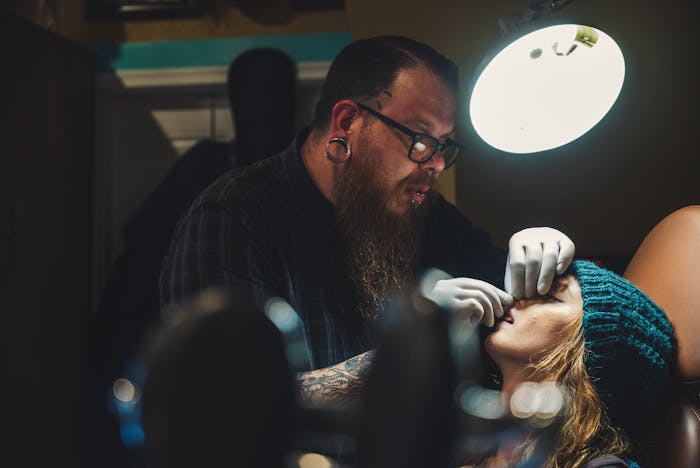Getting a piercing is more than just a fashion decision—it’s a form of self-expression, a reflection of personal style, and sometimes even a statement about one’s values or identity. With a wide array of piercing options available, from the classic ear lobe to more unconventional spots like the septum or dermal, choosing the right one can feel overwhelming. Not all piercings suit everyone, and what might look great on one person may not align with another’s personality or lifestyle.
Factors like work environment, daily routines, personal comfort, and pain tolerance all play an important role. We will explore how to make the most fitting piercing choice by connecting personality traits and lifestyle habits with suitable placements. Whether you’re bold and adventurous or calm and reserved, there’s a piercings in Austin that complements who you are, without compromising your comfort, routine, or expression.
Piercings That Match Your Character and Daily Life
1. Consider How Outgoing or Reserved You Are
Your level of extroversion or introversion plays a significant role in choosing a piercing that resonates with your personality. A more prominent piercing might feel like a natural fit if you’re outgoing, love being the center of attention, and enjoy bold fashion choices. Think nose piercings, eyebrow studs, or industrial bars—these types are visible and expressive, capturing the eye and making a statement. They tend to reflect confidence and a sense of individuality.
On the other hand, if you’re more reserved, a subtle ear lobe, helix, or daith piercing may align better with your personality. These choices are quieter in appearance but allow room for creativity and personal style through jewelry. They allow you to participate in body art culture without drawing too much attention. Understanding how visible you want your piercing to be—and how much attention you’re comfortable receiving—will help guide you toward a decision that feels right for you in both public and private settings.
2. Evaluate Your Work and Lifestyle Demands
Before settling on a piercing, it’s crucial to consider your daily lifestyle, especially your work environment and social responsibilities. Many workplaces, particularly those in formal or client-facing industries, have dress codes that limit or discourage visible piercings. If you work in healthcare, education, or corporate settings, a discreet piercing such as a small stud in the ear, nostril, or a hidden piercing like a conch may be more practical. In contrast, creative professionals, artists, and those in more relaxed industries might enjoy more freedom to experiment with visible and unconventional placements, such as septum, lip, or eyebrow piercings. Also, think about your hobbies or physical routines.
For example, athletes or those who wear helmets or headphones frequently might find piercings in certain ear positions uncomfortable or prone to irritation. Choosing a piercing that won’t interfere with your job or lifestyle helps ensure long-term satisfaction and reduces the likelihood of complications or needing to be removed later.
3. Match Your Style Aesthetic with Piercing Types
The kind of clothing, accessories, and overall look you gravitate toward can also guide your piercing decision. Those with an edgy or punk-inspired fashion sense might lean toward cartilage piercings, septum rings, or multiple lobe piercings. These complement layered outfits, bold patterns, and leather or denim-heavy wardrobes. If your style is more minimalist or classic, then a single delicate nose stud, a small hoop on the helix, or a pearl earring in the lobe may feel more harmonious with your appearance.
Bohemian or artistic individuals might find the daith, rook, or tragus piercings appealing, as these offer a slightly unconventional touch while still being elegant and soft. Essentially, your piercing should act like an accessory, enhancing your style rather than clashing with it. Visualize how different jewelry pieces will fit into your day-to-day aesthetic before committing to a particular placement or style.
4. Gauge Your Pain Tolerance and Healing Commitment
Some piercings are more painful, and their healing times can vary significantly. Knowing your pain threshold and your ability to care for a healing wound over time will help you make a realistic decision. For example, earlobe piercings are generally quick to heal and cause minimal discomfort, making them a practical choice for those who want a low-maintenance option. Cartilage piercings like the helix or tragus take longer to heal and require more aftercare to avoid infection or keloids.
If you’re impatient or know you’re prone to forgetting aftercare routines, starting with a piercing that heals within weeks rather than months may be a better fit. On the flip side, if you enjoy long-term commitments and don’t mind following a cleaning routine, then more intricate or sensitive piercings like dermals, industrials, or surface piercings could be worth considering. Understanding what your body can handle—physically and in terms of maintenance—helps set realistic expectations and improves your piercing experience.
Choosing a piercing that matches your personality and lifestyle is a personal journey that requires thoughtfulness and self-awareness. It’s not just about what looks good—how the piercing fits into your daily life, aligns with your character, and feels right for your body. From visibility and work requirements to pain tolerance and style preference, every factor plays a part in making a decision you won’t regret.
By taking these elements into account, you can confidently choose a piercing that enhances your appearance and complements your identity. Piercings are powerful tools of expression, and when chosen wisely, they become meaningful extensions of yourself. Whether bold or subtle, each one tells a story—make sure yours starts with an authentic and sustainable decision.


